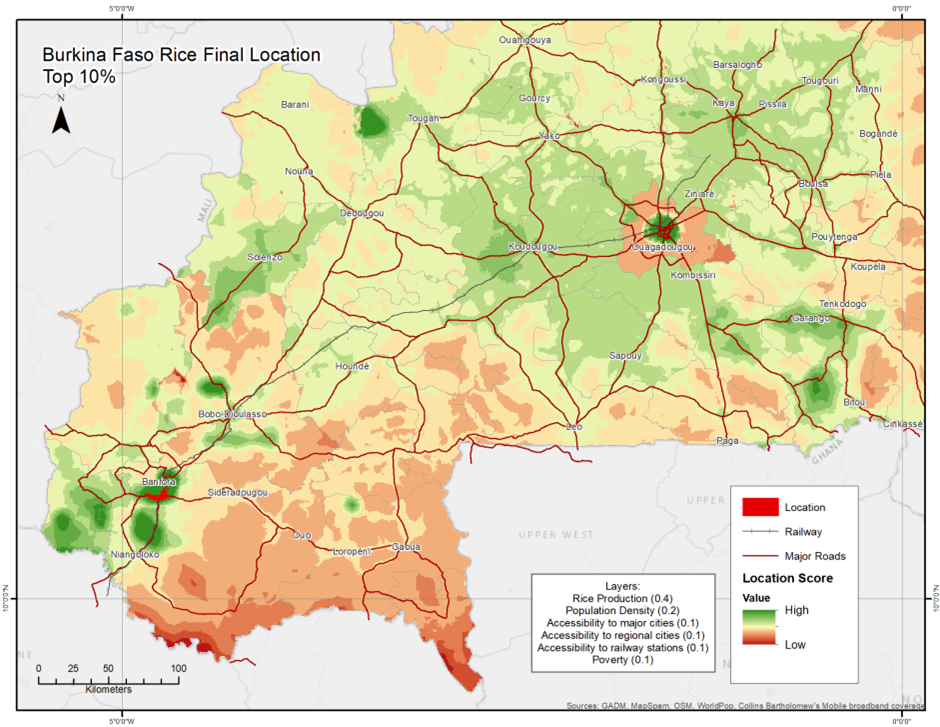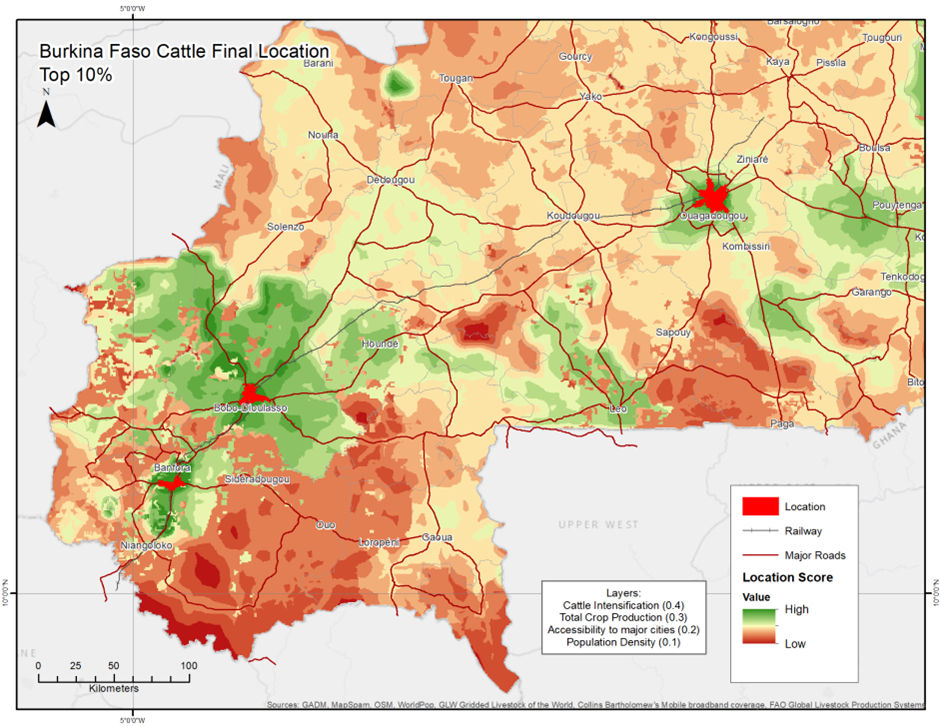Burkina Faso |
THE PROPOSAL
 | In Burkina Faso, the Hand-in-Hand Initiative supports investments in four of the 13 regions, namely Centre-East, Centre-West, East and South-West. The main intervention areas:
|
The Government aims to reduce the rural population's vulnerability and address inequality by boosting sustainable production, productivity, competitiveness and incomes in agriculture. The total investment sought is US$508 million. As of 20 September 2022, the investment gap is about 70%. The direct beneficiaries would be 923,800 individuals.
COMMODITIES AND INTERVENTIONS
Rice value chain development
Support processed and parboiled rice value chain, with activities
focusing on improving the quality of seeds (white, parboiled and rice
bran) and cultivation techniques.
Provide sufficient amount of agricultural equipment to farmers to increase efficiency according to the crop calendar. And improve working conditions for agriculture and family laborers.
The direct beneficiaries of these interventions will be 68,040 smallholder farmers working in the rice sectors (0.25 hectare per household). The quality and prices of products are expected to rise, with an internal rate of return of 21%.

COMMODITIES AND INTERVENTIONS
Peanut
Develop value chains for peanut and build capacity of value chain actors and suppliers of goods and services. Develop financial models to support these efforts. The estimated number of beneficiaries is 8,800 people who would be hired as part of this. The expected internal rate of return for peanut development value chain is 17.53%.
Sesame
Develop value chains for sesame and build capacity of value chain actors and suppliers of goods and services. Develop financial models to support these efforts. The estimated number of beneficiaries is 3,400 people who would be employed as part of this initiative. The expected internal rate of return is 15.55%.
"Produits Forestiers Non Ligneux (PFNL)" or Non-Timber Forest Products
Develop value chains for PFNL and build capacity of value chain actors and suppliers of goods and services. Develop financial models to support these efforts. Actors in the collection, processing and marketing of PFNL processes will benefit from this initiative. The expected internal rate of return is 23.65%.
Cattle farming
Set up a cattle fattening model. Provide stables with water for cattle and cleaning, optimizing dung collection. This intervention is expected to help boost national meat production and contribute toward improving national food and nutrition security. It is estimated that 1,000 livestock farmers will benefit from this. The internal rate of return is estimated to be 22.5%.


